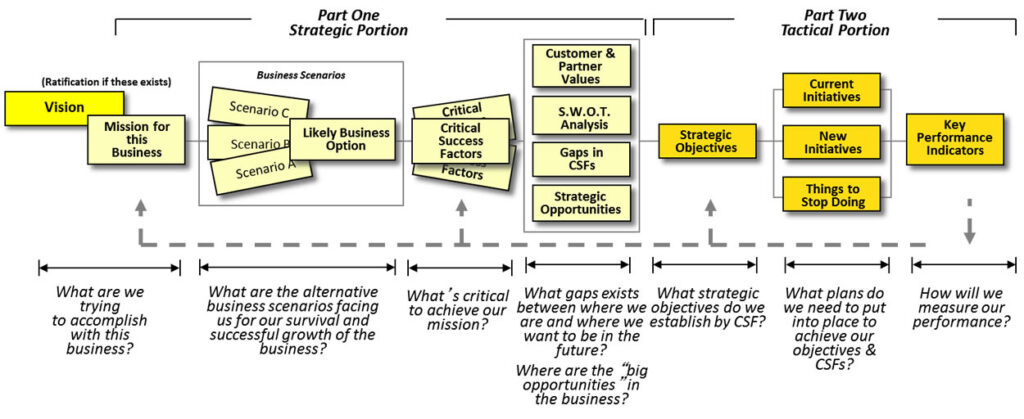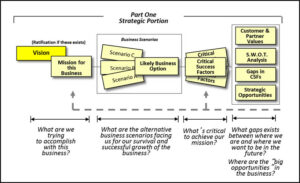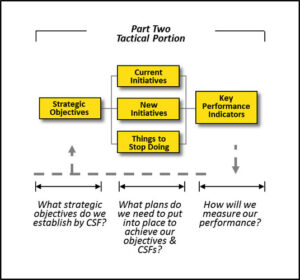Expected Benefits and Takeaways of the ePSP Model
- Gain a better understanding of the big picture of strategic decision-making
- Provides a viable and effective planning model for your organization
- Learn how to think strategically about your business in an orderly way
- Forces you to think about competitive advantage
- Ensures you include market segments and customers
- Learn how to integrate the strategy and the tactics
- Generate challenging and realistic actions
- Bolster your organization’s capability to deal with upcoming change drivers
- Create value for your organization
The tactical portion of the plan is developed to include a strategic objective for each CSF, identify current and new activities to close the gaps, identify unproductive work to stop doing as a means to create more capacity to do the right things, and identify a few key measures to track performance improvements for each CSF.
An important aspect of this process is how the strategic elements are directly linked to practical activities which result in an integrated plan. This drill down process ensures that the plan is dynamic and focused on those elements that will generate impact for your organization. This process is time-efficient and with proper preparation, participation, cooperation, and facilitation, can be completed quickly (pre-planning through to output) thus minimizing the so-called planning pain experienced by most planning exercises.



